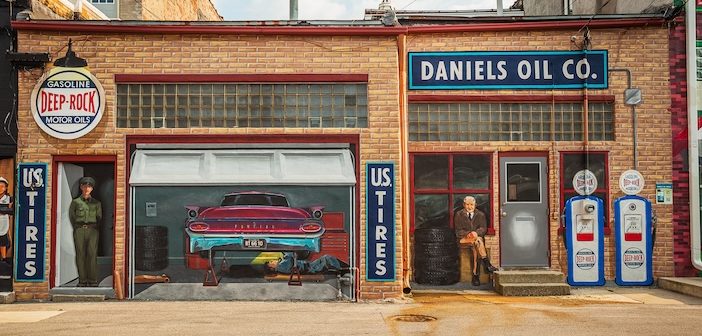As Route 66 approaches its centenary, Baldwin Ho sets out from Chicago to trace the Illinois stretch of America’s most storied highway — a 296-mile pilgrimage through diners, drive-ins, giant statues and the soulful heart of the open road…
Whilst I was never ‘born to be wild’ – I don’t even have a motorcycle licence – I’ve always harboured a fascination with that definitive strip of tarmac, Route 66. Undoubtedly, this was due to growing up with staples of Hollywood road trip films, Easy Rider, Thelma & Louise, even Cars musters up the romanticism of being ‘on the road’. And with 2026 marking the centenary celebrations of its opening, I decided to make a small pilgrimage, and endeavour to cover at least some of its 2,448-mile length to relive that childhood fantasy. I opted for its beginning, through Illinois, from Chicago to Grafton, getting my motor running and embracing all the quirky Americana on offer.
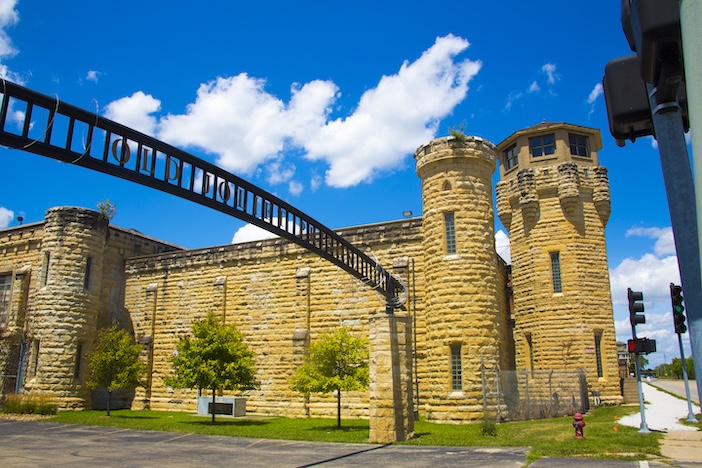
Most 66 pilgrims tend to pass Lou Mitchell’s in Chicago for a sturdy breakfast as the starting point of their adventure, and I had to be well caffeinated, as the first stop was straight to Old Joliet Prison, which you might recognise from the likes of The Blues Brothers and Prison Break, both filmed here.
The imposing stone walls and that iconic main gate are more likely to attract social media content creators rather than hardened criminals these days, and while some parts of the estate are very well-preserved, others are rather dilapidated, hence the more visitors they get, the more likely this historic institution will last beyond its bicentenary in 2060.
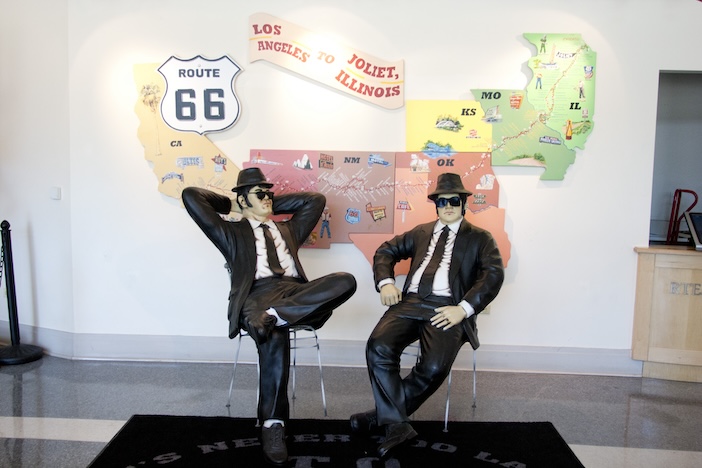
Film buffs aside, there is also the Illinois Rock & Roll Museum in Joliet, less a static collection of artifacts than a living testament to the state’s musical soul. It traces the journey from the Great Migration’s blues and gospel roots to the electrified swagger of Chicago’s clubs and the arena-filling riffs of bands like REO Speedwagon and Cheap Trick. Here, guitars, jukeboxes, and weathered photographs tell stories of migration, innovation, and identity — reminding visitors that Illinois was never just a waypoint between coasts, but a crucible where America found its rhythm and, ultimately, its voice.
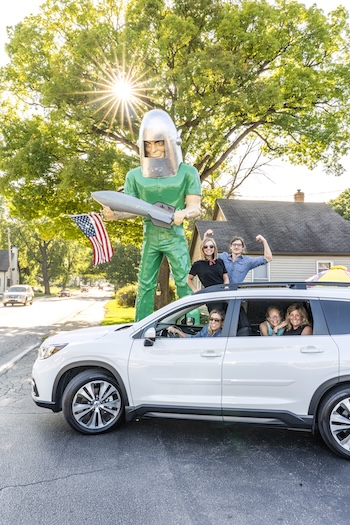
The larger-than-life nature of Route 66 makes it fitting to find larger-than-life statues along the route. Arguably, the most famous is the Gemini Giant in Wilmington, which harks back to the 1960s, when the American public was entranced by space exploration. Used as advertising billboards, these giant statues have outlived the institutions they were promoting, and in the case of Gemini Giant, the Launching Pad Diner, which has long since closed.
Diners aside, the other pit-stops that are immortalized on Route 66 are, unexpectedly, gas stations. A short 25-minute drive away, in Dwight, is Ambler’s Texaco gas station. The longest-serving gas station on Route 66, it operated for 66 years before closing in 1999.
Now, it’s an essential photo stop for Route 66 enthusiasts, and I lived my best fireman’s dream posing on Dwight’s first motorised fire engine. There’s a concerted effort to preserve these icons of America’s love affair with the road, and many have a long history linked to the country. In the 1960s, they played a vital role as a safe haven for black travellers, when it wasn’t unusual to spot ‘Whites Only’ restaurants and hotels.
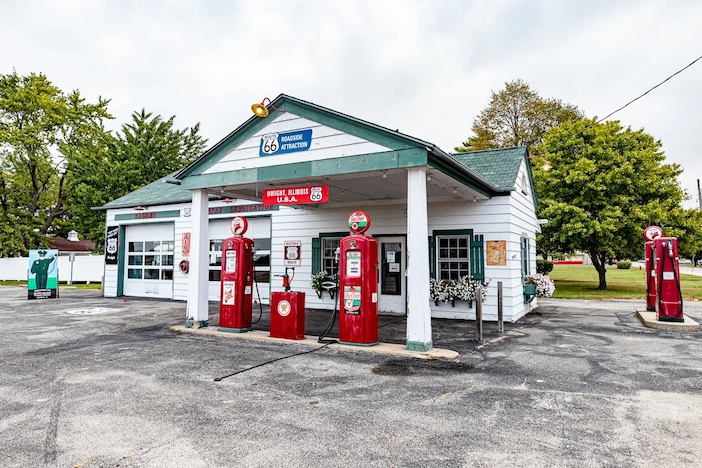
Along the route, there are numerous museums celebrating the ‘Mother Road’, as you might expect. One of the most engaging is the Illinois Route 66 Hall of Fame and Museum in Pontiac. They have the world’s largest Route 66 shield mural, which made my 6’2” height pale into insignificance. The highlight, however, is the famous Road Yacht, a 1966 school bus converted by Bob Waldmire, the godfather of Route 66, into a liveable studio on four wheels. Waldmire dedicated his whole life to creating artwork of Route 66 and inspired the famous hippie 1960 Volkswagen Type 2 mini-bus character, Fillmore, in the Pixar animation, Cars.
Just a 55-minute drive away is another spot for kitsch Americana lovers, the American Giants Museum in Atlanta. Unlike Wilmington, they have multiple statues here: Hot Dog Muffler Man, The Snerd, Carpet Viking. All were used as advertising on Route 66 before being decommissioned. They’ve all reached immortality now, living on countless Instagram pages.
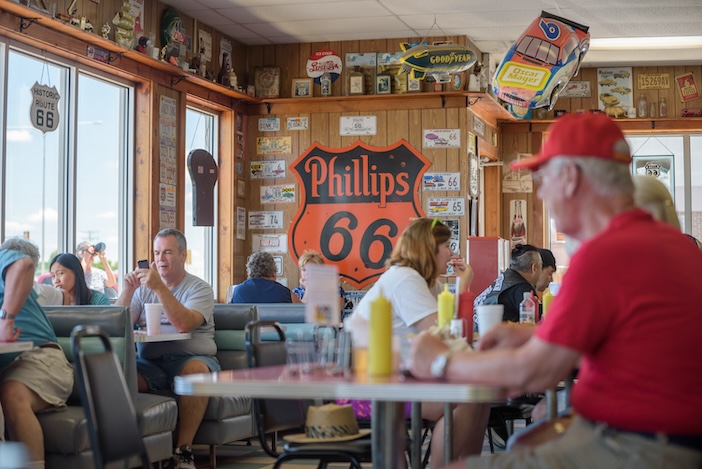
A word or two must be said of the road’s culinary scene, if you can call it that, as it defines the route as much as gas stations and giant statues. The ‘Route 66 diet’ won’t win many awards with Michelin, but one diner worth checking out is the Cozy Dog Drive-In, keeping drivers and bikers satiated since 1949. They famously invented the original corn dog on a stick, which has been made even more famous in Korea nowadays. Remarkably, it is still family-owned by the Waldmires in their third generation and undoubtedly inspired Bob Waldmire’s love affair with Route 66.
Another institution is Motorheads in Springfield. Filled with neon lights, vintage signs and retro cars and motorcycles, it is the embodiment of the Route 66 spirit. Whilst you are waiting for your Po Boy to be prepared, you can stroll around their museum and spot classics like the Easy Rider Captain America chopper. It is the iconic symbol of counterculture and rebellion.
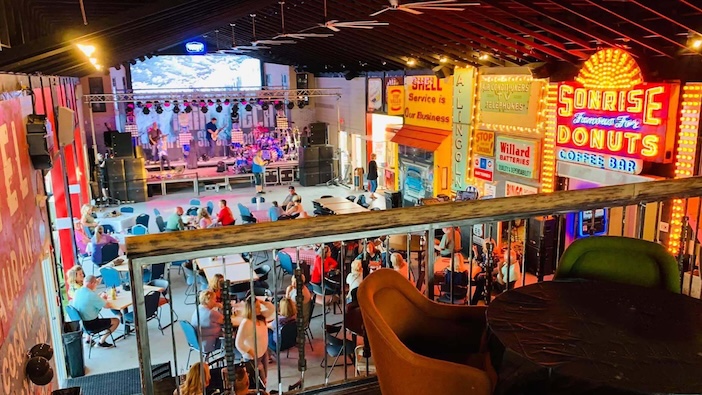
If seeing pink elephants is a euphemism for hallucinations from overdrinking, it might seem odd to name a mall as such connected to being behind the wheel, but that is the Pink Elephant Antique Mall in Livingston. It’s 30,000 square feet of antique madness, where you might discover a retro Marvel comic book worth thousands or a prehistoric lampshade from your nan’s house.
Only in America would you find a statue of your president next to an alien-looking dinosaur and in close proximity to a quirky pink elephant sculpture. There are bargains to be discovered here, for sure, but it’s definitely worth setting aside enough time just to browse the curiosities.
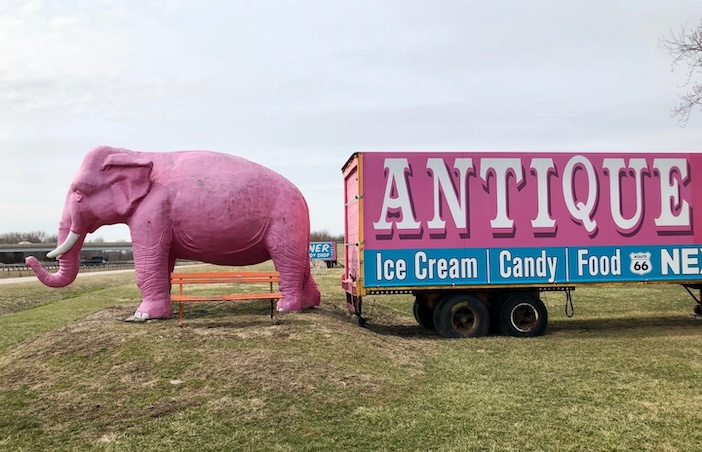
I say this advisedly, but if you are looking to imbibe – and have a motel nearby – and want to find the best selection of bourbons this side of Route 66, you should head to Tasting at the Speakeasy. Hidden behind a meat-locker door, you enter a stylish 1920s Prohibition bar, where vintage dresses are the norm and there’s an abundance of Tiffany lamps. The live music is of the Frank Sinatra variety, so brace yourself as Rat Pack wannabes tend to want to commandeer the all-important microphone.
If speed is in your veins, however, a short 8-minute taxi ride away is Worldwide Technology Raceway. You get all the top motorsport events like NASCAR, INDYCAR, and Formula DRIFT. There is none of the gentlemanly driving from Formula One here; this is Fast and Furious style in the spirit of the American roadeo (ahem).
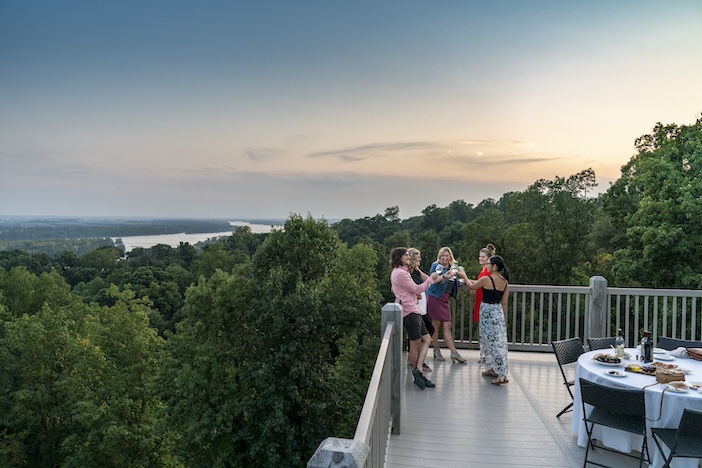
Aerie’s Resort in Grafton, Illinois (photo by Ryan Donnell).
There’s no better way to end your Illinois Route 66 adventure than on the terrace at Aerie’s Resort in Grafton. It’s situated majestically above the confluence of the Illinois and Mississippi rivers. You are at the perfect vantage point to see how incredibly scenic this region is. I may not have managed much more than 10% of the route to its conclusion in Santa Monica, but my 296 miles from Chicago to St Louis, and the border of Missouri, was an ideal introduction to the spirit of the open road — a journey stitched together by diners and drive-ins, vintage neon and open horizons, and the stories of the people who keep them alive.
For more information on Illinois, and to start your journey along Route 66, please visit the official tourism website at www.enjoyillinois.com.

